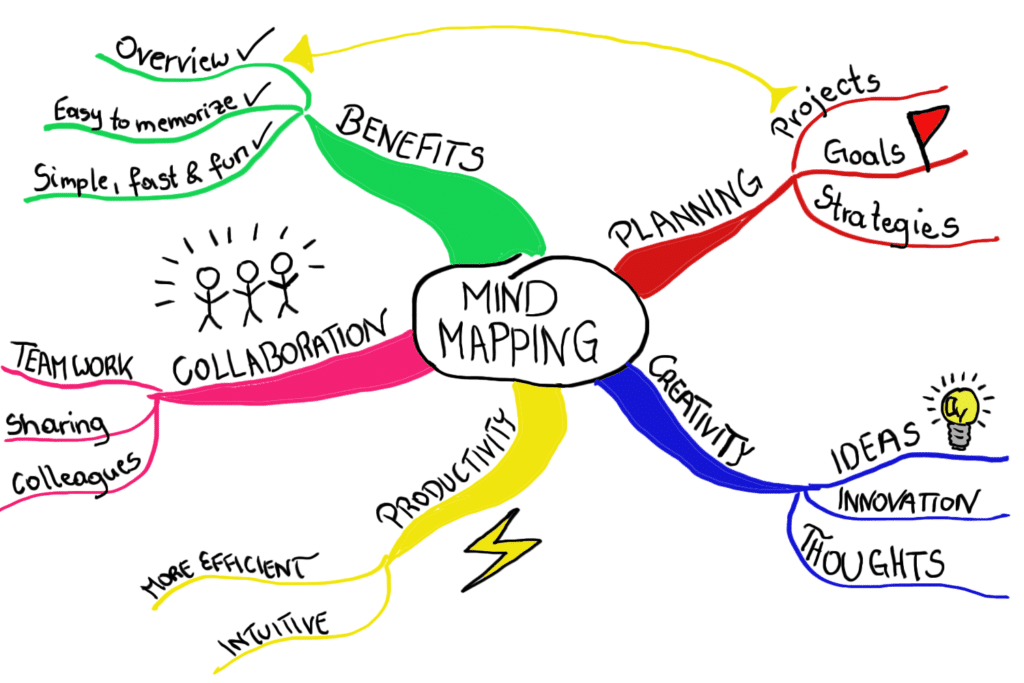От халепа... Ця сторінка ще не має українського перекладу, але ми вже над цим працюємо!

Is a full-stack team a modern-day IT utopia?

Supernerd
/
Developer
7 min read
The pace at which technology is evolving, changes the way businesses operate worldwide. Updates on existing technologies and innovations of new technologies are happening daily. The number of technology providers is also rising, and with intense competition among them, options for the best technology are several.
One of the most important technologies is web application development. Every business that wants to expand its market globally may either build its website or operate under an already established e-commerce website. If they choose to build their website, the real dilemma may be in choosing the right developer for their project. There are two types of developers, full-stack teams and full-stack developers. There have been a lot of arguments, differing opinions, and articles regarding full-stack teams and full-stack developers over the years. The opinions range from the need for specializing in one area or taking responsibility for the entire project.
When did this notion emerge?
This notion of full-stack teams and full-stack developers first emerged in the mid-2000s with the introduction of web development. Interest in full-stack teams and full-stack developers (based on Google trends) grew as a result of prolonged conflicts between front-end developers and back-end developers.
From the very start of programming, one person could write a full software program from start to end. These type of programs had only a single layer and required just one computer to run. Then came the computer networks (connecting computers into networks) which altered software development.
Typically, today’s software systems consist of front-end and back-end. Front-end involves everything that a client can see and interact with on a web browser, desktop or smartphone. Back-end, on the other hand, is the service side of the application. It involves all aspects that enable communication between components to fill the client-side with data, such as application, server, database e.t.c.
Software systems can have several tiers or layers, each of which requires complex technologies. This has made programming to evolve to processes that need teamwork. Today programmers are divided into front-end and back-end developers, and each developer is an expert in the technologies they use.
In some instances, dividing development into back-end development and front-end development can result in inefficiencies. Poor communication is the main reason for such inefficiencies. Back-end developers are not always aware of changes in front-end and API, or vice versa. Since they specialize in a narrow field, they may not know if something is wrong on the other end. Discovering mistakes takes time for developers on both ends.
It, therefore, requires effective communication between back-end developers and front-developers for the development to be efficient. This problem has led to the rise of demand for developers with knowledge in both ends; that is full-stack developers and full-stack teams. In case, a mistake happens, a full-stack team or a full-stack developer will be able to check the problem and resolve it themselves. This eliminates the chances of delaying the development process. This tendency of working with a full-stack developer or a full-stack team does only save time but is also cost-effective. So, which type of developer should your organization work with, a full-stack developer or a full-stack team?
What is a full-stack team?
A full-stack team is a group of dedicated developers who specialize in various fields of software development (front-end and back-end development, among others).
On the contrary, a full-stack developer is an expert who can work on every part of the development process. A full-stack developer has skills for both front-end and back-end development. So, should a company go for a full-stack team or a full-stack developer? We do not believe it should be one or the other. Rather it depends on the operating model of your company.
Characteristics of a true full-stack team
A dedicated development team should have the following characteristics:
- Agile
- Empowered
- Accountable
- Value generating
- Self-sufficient
Agile
This is about being able to move quickly and easily. A full-stack team should be able to develop concepts, test concepts, address issues rapidly, deliver the product quickly and be flexible in responding to changes. A full-stack team should have seamless communication, short feedback cycles and passion for action. The team need not be together physically. A virtual team is okay. The important thing is creating a dedicated development team that can make decisions, implement them, and address issues quickly if necessary.
Empowered
It is important that a full-stack team be empowered to make appropriate decisions. Such decisions include architectural design, feature implementation, and product release. The team should be able to make independent decisions on its priorities. If a team has to continuously seek approval from the top. It is not an empowered team. Additionally, the team may not be held accountable for other people’s decisions.
Accountable
If a full-stack team is empowered to make independent decisions, it should be held accountable. The team should be held accountable for the end result from every perspective – product quality, meeting expectations, customer requirements, among others. Full responsibility implies that the team should fully understand the impacts and benefits of the product on the end-user and ensure a successful end result.
Value generating
A full-stack team should do what matters versus what is easy, eliminate waste, and deliver value. This may seem obvious but rarely do you see developers gold-plating features, or a team working on a super cool product that provides value to just a few end users. A full-stack team should be able to eliminate unnecessary waste from the process of achieving that value.
Self-sufficient
Just like a full-stack developer, a full-stack team should be able to address all issues in every stage of the development process. The team should be autonomous with the right tools and the right skills to deliver the required outcome.
Full-stack teams vs Full-stack developers
Whether to go for a full-stack developer or a team of specialist depends on such things as project size, complexity, and budget. Of the two, there is a strong case against a full-stack developer (there is a general feeling that a full-stack developer cannot be as effective as a team of specialists). This is based on the fact that it is rare to find a developer with the capability to easily navigate both front-end and back-end with a superior level of expertise.
Ideally, this is what a full-stack developer should be capable of doing:
- Write an outstanding front-end at the same level of expertise of a front-end specialist developer
- Equally, write a first-rate back-end side as a back-end specialist
- Be able to manage the infrastructure of the server
- Oversee security, DevOps and QA
- Also, a full-stack developer should be able to deal with the business demands and non-technical project management of coordinating their work with the product
While there exists full-stack developers who can do well at both ends, only very few can do it at the level of specialist developers. Truly full-stack developers are rare but there are too many people nowadays billing themselves as full-stack developers without the necessary expertise.
The argument against ‘full-stack developers’ can be summed up by the following points:
- It may be a way for companies to make unreasonable demands of their employees. It enables employers to task one employee with a huge amount of responsibility. This benefits the employer, and at the expense of the developer. Tasking a single developer with a lot of responsibilities is cheap for companies compared to hiring multiple specialists.
- It encourages wide breadth but shallow knowledge depth: A full-stack developer cannot be fully immersed in both back-end and front-end. Focusing on the entire stack makes a full-stack developer a jack of all trades, but a master of none
- It implies a level of expertise that does not exist: ‘Dual mastery’ of both back-end and front-end tasks is almost impossible considering the rate at which new tech evolves.
True full-stack developers are rare and far between. Rather, most self-declared full-stack developers are front-end specialists with some knowledge of back-end development or vice versa.
Let’s look at the advantages and disadvantages of both kinds of developers.
full-stack teams pros
- Incremental development: Incremental build model involves designing the software, implementing and testing incrementally until the product is fully developed. With an incremental model makes the process of development quicker, it is flexible (it costs less to change the requirements and scope), customers are able to respond to each built and it is easier to manage risks since risky pieces are discovered and fixed during small iterations.
- Faster process: Individual responsibility for every part of the project makes the process faster
- High quality for every completed part of the project: Every part of the development cycle has a specialist in that area
- Perfect for product support
full-stack teams cons
- Requires mature developers
- Heavy workload
- Higher costs compared to a full-stack developer
- Dependency on team members
full-stack developer pros
- Low hiring costs in case of a single developer
- Less professional burnout due to frequent switching between tasks
- Universalism; ability to debug everything
full-stack developers cons
- Knowledge depth might be a problem
- The latest advancements may be left out if the developer fails to cope with the market
- Lack of responsibility zones may delay the project
Factors to consider when choosing between a full-stack team and a full-stack developer
Now that we have looked at the differences, pros, and cons of the two types of developers, we want to know whom to choose. Actually, the choice very much depends on the project criteria, that is:
- Project size: If you have a small scale project, choosing a full-stack developer is justified. Otherwise, a full-stack team is recommended for a large scale project.
- Project flexibility: In cases where the requirements of your project can easily flow to other directions, you require a developer who is similarly flexible. A full-stack developer would be a suitable choice since he can easily switch from one area to another. In case of more rigid and stable requirements, a fully-fledged team of specialists is recommended.
- Project complexity: A complex project requires a team of specialists.
- Project budget: Clearly, if you have a limited budget, a full-stack developer would be an apt choice. However, in other instances, we recommend hiring a full-stack team.
- Project quality: This point is deduced from the previous point, giving us a cue that superior quality implies superior effort. While undemanding quality can effectively be done by a full-stack developer, high-quality projects require full immersion and are best done by a team of specialists.
Is a full-stack team the right solution for your case?
Should every organization go for a full-stack team? Or more importantly, is a full-stack team a modern IT utopia? It depends. Your organization may not need teams that are self-sufficient or agile, but teams need to held accountable for their results, be empowered and deliver value.
There are several aspects that determine the best choice for every organization. A full-stack team is the best option in the following instances:
- When your Minimum Viable Product (MVP) has shippable features with continuous delivery.
- In complex custom solutions: A full-stack team is preferable when your project is large and requires much attention.
- When you may need to be more agile: If your project’s requirements might change on the go, a team of specialists is preferable as they can adapt faster.
Endnote
Whether your organization should hire a full-stack team or a full-stack developer is a matter of choice. Now that we have looked at the advantages and disadvantages of both choices, your decision should be based on your budget, project complexity, project size, required quality, urgency, among other things. Finally, it should be noted that most organizations turn to full-stack teams to build their Minimum Viable Product (MVP) and fully-fledged business solutions.
Related articles
See all

Roman Oliynyk
/
QA Engineer
— 5 min read


